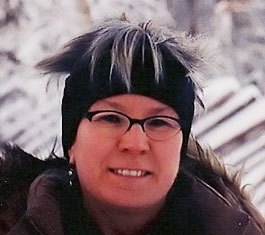




©2009-2015 No content from this site may be reproduced without consent from Marjorie Woodruff.
I was born and raised in Glenview, Illinois. I received a Master of Fine Arts in 1986 from Northern Illinois University. After receiving an Illinois Arts Council Artist-in-Residency Grant in 1989, I moved to Chicago.
I currently teach at Harold Washington College, City Colleges of Chicago, where I have been an adjunct faculty member since 1996, Governors State University, and Moraine Valley Community College as well as Lillstreet Arts Center since 1991.
I taught ceramics classes in my West Town and Humboldt Park neighborhood through various funding sources, including after school programs, at Jose de Diego Community Academy, through Lillstreet’s non-profit.
I was asked to conduct three artist residencies at Roberto Clemente High School, through the Museum of Contemporary Art; and programs at local community centers and at Chicago Public Housing Units, through several Neighborhood Arts Assistance Program Grants.
I have created several temporary public art projects. Two addressed community issues were funded by Community Arts Assistance Program grants and a Regional Artist Project Program grant. The first piece, entitled Installation on Division, was displayed in 1991-1992 and dealt with cultural, social and economic divisions.
The second piece, SPIRAL: The Life of Lucy E. Parsons in Chicago, 1873-1942, was installed from 1995-2004 on Chicago Park District property in Wicker Park It was donated to the park in 1997.
The piece was composed of a spiraling bench and a “mailbox” both made of wood, metal mesh, and ceramic tiles with text in Spanish, Polish, and English that told the story of Lucy Ella Gonzalez Parsons, a labor and civil rights activist who once lived in the neighborhood.
The text asked a series of questions relating to social-justice, housing, and working class issues that paralleled Lucy’s life. The community was invited to drop their written responses in the billboard-like box.
My work has also focused on smaller-scale hand-built and thrown ceramic objects that combine functional and sculptural forms addressing social and political issues. In early 2009, these sculptures were exhibited in a solo exhibition at Woman Made Gallery called Rack and Ruin.
Currently I am working on a series of gallery and outdoor installations that connects old growth forest with domestic woodwork, and the imagined history that these trees witness and embody. The first of this series called Ghost Trees consisted of a room-sized installation that was part of a group exhibition at the Illinois State Museum Gallery called Footprints Through Time: Artists Inspired by History spring of 2015.
As a studio and public artist, my artwork has focused on smaller-scale hand-built and thrown ceramic objects that combine utilitarian and sculptural forms and that address social issues and political events. My intention is to confront viewers with unsettling content while playing with the notions of traditional decorative or “craft forms”—to construct visually appealing objects that attempt to evoke an uncomfortable emotional response through addressing timely social concerns, both local and global.
My current and ongoing Ghost Trees series of projects, which aim to connect domestic woodwork to its forest sources, represent a body of work that is more consciously personal, more poetic commentary than politically oriented.
These temporary mixed media installations are composed of ceramic tree sculptures, old-growth woodwork, and stereoscopic photographs of my porcelain trees placed back in the forest. The projects are a shift towards working with more nature-based, biomorphic forms that address the relationships between nature and culture, between humans and the natural environment.
Although my Ghost Trees projects originated from my personal experiences, the act of reflecting on the life-and-death cycles of old-growth trees (and their transformation from “nature” to “natural resources”) still has social and environmental implications.
Whether by embracing traditional forms or by altering forms into unconventional sculptures, my purpose is to provoke discussions—to hopefully to foster a dialogue among diverse groups of people within and outside my community regarding issues of environmental justice and sustainable renewal.